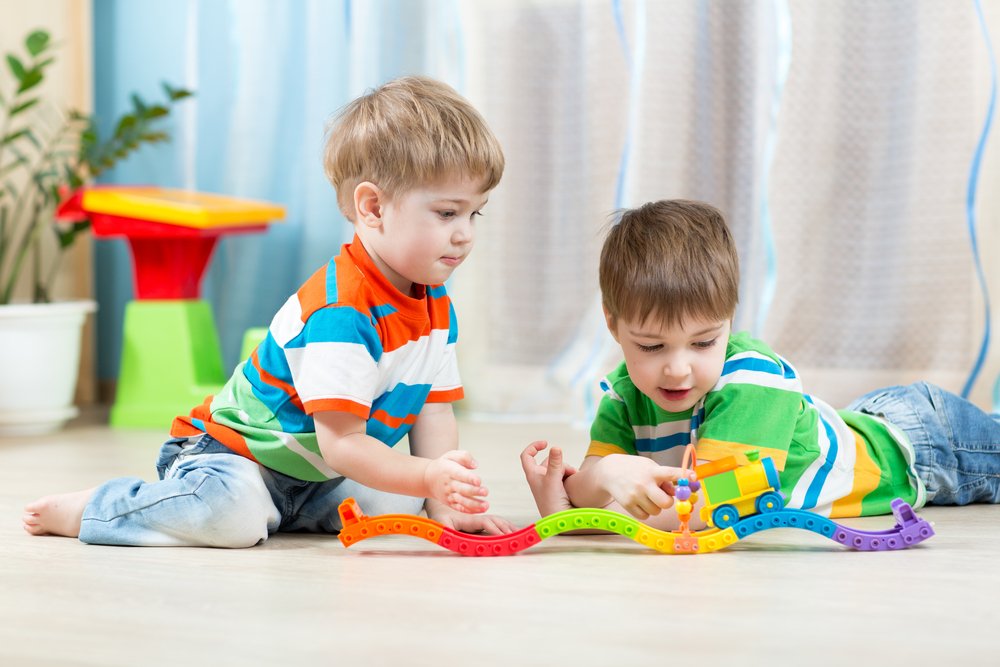
Learning the rules of language
Key points:1. Children naturally learn language and grammar rules through use.2. They acquire the specific dialect of those around them.3. Children use pronouns…
Discover the key milestones of physical, cognitive, linguistic and socio-affective child development and understand the science behind child development.
Discover the key milestones of physical, cognitive, linguistic and socio-affective child development and understand the science behind child development.

Key points:1. Children naturally learn language and grammar rules through use.2. They acquire the specific dialect of those around them.3. Children use pronouns…

Key points:1. Preschool years exhibit significant variation in language development.2. Talkativeness doesn’t equate to intelligence or vocabulary richness.3. Language differences often even out…

Key points:1. A two-year-old’s receptive language is developing rapidly, understanding around 200-300 words.2. Receptive language is the ability to understand words and their…

Key points:1. Phonological awareness is crucial for literacy development in preschoolers.2. Teach your child the sounds of letters, not just their names.3. Engage…

Key points:1. Children’s language development is linked to their ability to recognize patterns.2. A study with 6 to 8-year-olds found a strong connection…

Key points:1. Stuttering in children around age two or three is common and often temporary.2. Actual stuttering is when it persists for over…

Key points:1. Around age three, children have a vocabulary of 300 or more words and can acquire 4-6 words daily.2. Improved language skills…

Key points:1. Around age two, children understand and start using more words, forming sentences.2. Avoid comparing your child’s language skills to others of…

Key points:1. Reading with preschoolers builds vocabulary and strengthens the parent-child bond.2. Making reading a daily routine, like bedtime, is a great idea.3….

Including reading time in your daily routine not only boosts the language development, but provides you with special one-on-one quality time that strengthens…

Key points: Reading with your preschooler enhances their language skills and strengthens your emotional connection. Choose books with attractive illustrations, favorite characters, and…

Key points: Language acquisition is a complex process involving cognitive and physical development. Phonemes are units of speech sounds in every language. Children…

Key points: Children around 36 months start using more advanced vocabulary. They name smaller body parts like eyebrows, nails, and knees. Expose them…

Key points: Proprioception is the sense of knowing where your body is in space. Special receptors in muscles help us maintain posture and…

Key points: Preschool years are critical for motor skills development. Catching a ball involves cognitive and physical skills. Children progress from basic catching…

Key points: Gross motor skills, like throwing a ball, develop around 48 months. Throwing indicates muscle strength, balance, and coordination. Children progress from…

Key points: Developing motor skills is crucial for writing, especially between 36 and 48 months. Engage in activities like A-B-C bingo and drawing…

Key points: Preschoolers use gestures to aid understanding and communication due to their limited vocabulary. Research highlights how these gestures play a crucial…

Key points: Encourage appropriate expression of emotions and needs through words. Promote various types of play and taking turns. Foster an interest in…

Key points: Coloring fosters creativity and visual perception. Enhances hand-to-eye coordination. Expands vocabulary by exposing kids to descriptive words. Develops color recognition, fine…

Key points: Music engages a child’s attention and supports language acquisition. Repetitive songs help kids learn new words and enhance memory skills. Encourage…